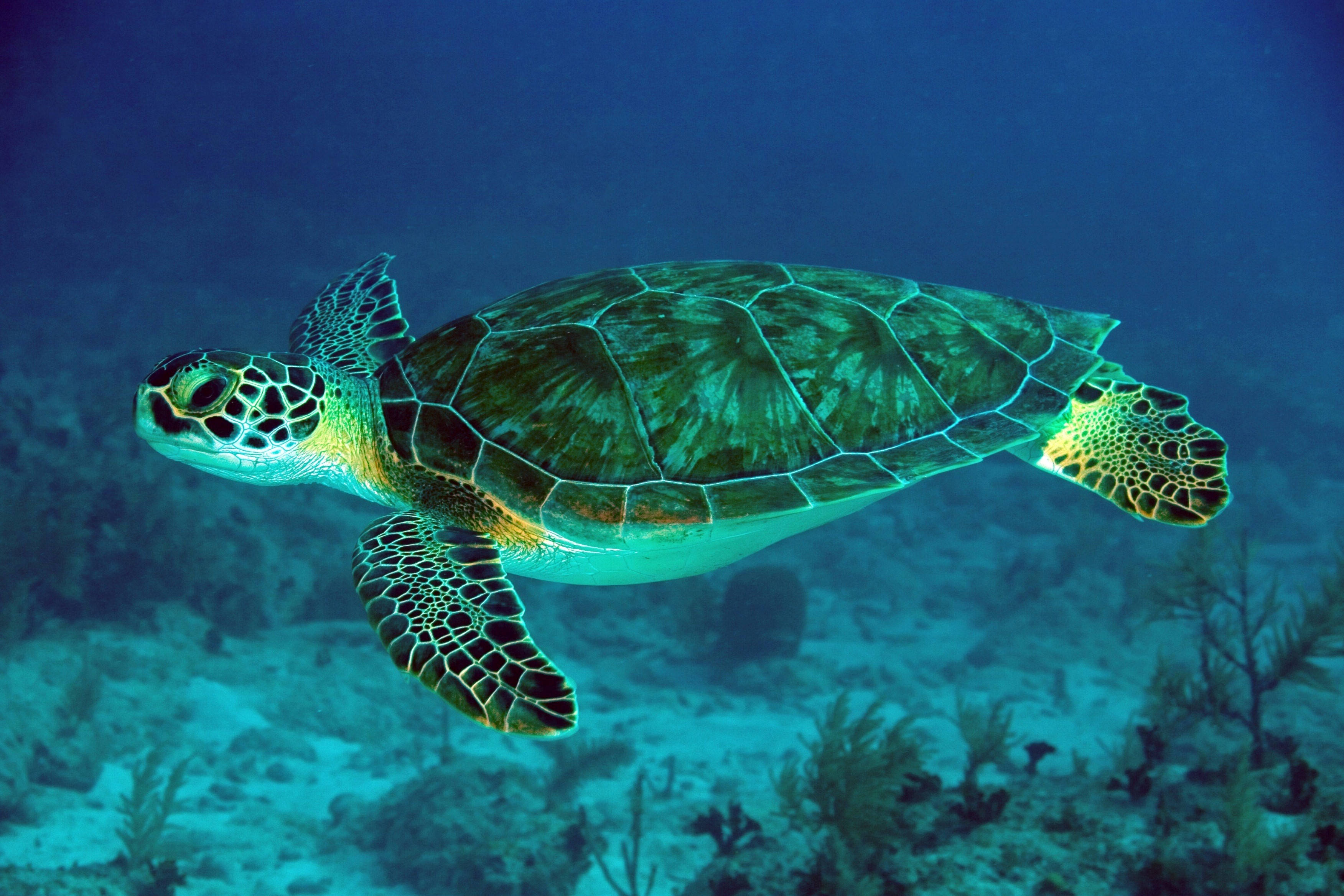 |
| Fig.1 - Leatherback Sea Turtle |
The sea turtle is among the few reptiles that depend on the water for habitat and survival. It is known that most turtles can hid inside of their shells for protection against predators, but the sea turtle cannot. Sea turtles need to stay underwater for long periods of time in order to eat and drink. Some turtles have the ability to stay underwater for up to 5 hours without coming up for air. There are different ranges of sea turtles shells. Some turtles have soft shells (leatherbacks) as seen in fig.1 and others have a hard shell (green turtles). There are 7 species of sea turtles, they all belong to the taxonomic family Chelonioidea. Sea turtles are found all throughout the Atlantic, Pacific and Indian oceans. They thrive in warmer environments. It is believed that the shell was not originally adapted only for protection, the same way bird feathers aren't only for heat/insulation.
 |
| Fig.2 - Eunotosaurus ancestor to the sea turtle |
A sea turtle's shell is a modified ribcage and is made of up approximately 60 bones. The shell is covered by plates that are made up of similar material as our fingernails (keratin). The shell started off as a ribcage back when the Eunotosaurus, a close relative to the turtle, was a digger (fig.2). The Eunotosaurus lived underground and used its front legs for digging. We can see this similarity of digging skills in the sea turtles today when the females need to dig a hole in the sand in order to protect their eggs. The adaptation of a bigger rib cage, in order to dig more efficiently and support the front legs while digging, was advantageous and then spread more throughout the population. Over time the Eunotosaurus with the larger rib cages (stronger digging abilities) became dominant. Larger and larger rib cages were spread through the population, eventually leading to the ribcages developing behind the shoulder blades and attaching to the spine. The reason scientists believe that the shell was not originally used for protection, is because the shell does not cover the neck, legs or head.
 |
| Fig.3 - Sea turtle shell |
Currently, the sea turtles’ shell is advantageous in the sea because it acts as its main type of protection. The sea turtles shell is streamlined so they do not have any drag when swimming or hunting for food (fig.3). A major disadvantage of the turtle shell
 |
| Fig.4 - Baby turtles making their way to the shoreline |
References
1.) http://animals.mom.me/shell-protect-turtles-4806.html
2.) http://www.theatlantic.com/science/archive/2016/07/the-turtle-shell-first-evolved-for-digging-not-defence/491087/
3.) http://www.livescience.com/52361-turtle-facts.html
4.) https://answersingenesis.org/reptiles/turtles/
5.) https://seaworld.org/en/animal-info/animal-infobooks/sea-turtles/habitat-and-distribution
6.) https://en.wikipedia.org/wiki/Sea_turtle